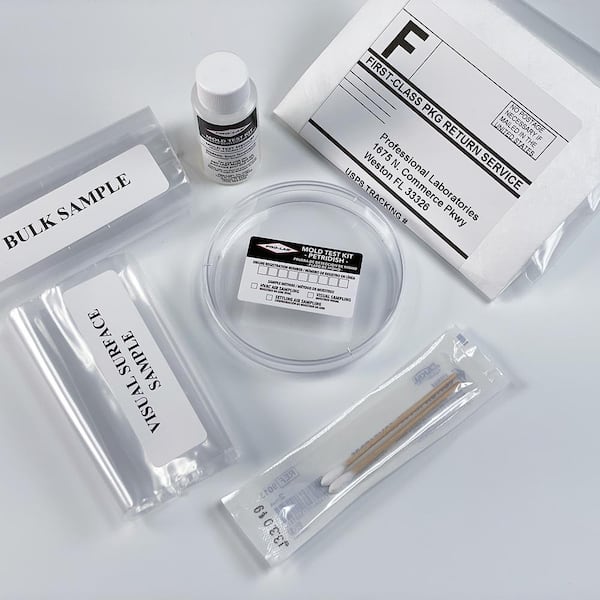The Necessity of Mycotoxin Testing in Agricultural Products to Ensure Customer Safety And Security
The need of mycotoxin screening in agricultural products is a critical element of public wellness and safety that calls for comprehensive assessment. Mycotoxins, toxic compounds created by certain fungi, can infiltrate different plants, leading to substantial health risks for consumers, such as carcinogenic impacts and body organ damages.
Understanding Mycotoxins
Mycotoxins, hazardous second metabolites generated by specific fungis, provide a significant threat to agricultural products and human health. These compounds are created by various types of mold and mildews, such as Aspergillus, Fusarium, and Penicillium, which can infect plants both pre- and post-harvest - Mycotoxin testing Services. One of the most usual mycotoxins include aflatoxins, ochratoxin A, fumonisins, zearalenone, and deoxynivalenol (DON)
Mycotoxin contamination can occur under specific environmental problems, such as high humidity and temperature level, which favor the growth of mold. Agricultural items like grains, nuts, flavors, dried fruits, and coffee are particularly susceptible. The visibility of mycotoxins in these assets can bring about considerable economic losses due to lowered plant returns and the requirement for rigorous screening and decontamination processes.
Understanding the biochemical nature and formation of mycotoxins is crucial for developing reliable reduction methods. Research study has revealed that mycotoxins exhibit a variety of chemical structures and buildings, making discovery and elimination difficult. Advanced logical techniques, consisting of chromatography and mass spectrometry, are utilized to identify and quantify mycotoxins in farming items, ensuring that contamination levels continue to be within risk-free restrictions developed by regulatory bodies.
Health Risks of Mycotoxins
Provided the substantial risks linked with mycotoxins in agricultural products, understanding their influence on health is vital. Mycotoxins, poisonous second metabolites created by fungis, posture serious dangers to both human and animal wellness.
Severe mycotoxin poisoning, although less common, can trigger extreme and immediate illness such as liver damages, stomach disturbances, and hemorrhaging. Ochratoxin A, another powerful mycotoxin, is connected to kidney damages and has possible cancer causing impacts. Fumonisins, largely affecting maize, are connected with esophageal cancer and neural tube flaws.

Usual Resources of Contamination
Recognizing the common sources of contamination is crucial for effectively managing and minimizing the dangers presented by mycotoxins. Mycotoxins are harmful second metabolites created by particular kinds of fungis, which can infect farming products at numerous phases of storage, processing, and production. The primary sources of contamination consist of field problems, post-harvest handling, and storage space environments.
Area problems play a substantial duty, with variables like you can find out more climate, plant vulnerability, and soil wellness influencing fungal development. Plants such as corn, peanuts, wheat, and tree nuts are particularly vulnerable to mycotoxin-producing fungis like Aspergillus, Fusarium, and Penicillium varieties. Insufficient crop rotation and poor parasite monitoring can worsen the danger of contamination.
Post-harvest handling is another critical point where contamination can take place. Mechanical damages during harvesting and transport produces access factors for fungi, while improper drying out methods can leave moisture degrees high enough to sustain fungal development.
Storage environments add significantly to contamination threats. Improperly preserved storage space facilities with high humidity and temperature level degrees create perfect problems for mycotoxin production. Routine assessments and proper storage space conditions are essential in curbing this threat.
Mycotoxin Examining Methods
Reliable administration of mycotoxin contamination pivots not only on acknowledging potential sources however likewise on applying durable testing techniques to spot these harmful compounds. Mycotoxin screening methods can be extensively classified right into chromatographic and immunochemical methods. High-performance fluid chromatography (HPLC) and gas chromatography-mass spectrometry (GC-MS) represent sophisticated chromatographic methods recognized for their high sensitivity and precision. These methods are experienced at quantifying numerous mycotoxins in complex matrices, making them very useful for extensive evaluation.
On the various other hand, enzyme-linked immunosorbent assay (ELISA) and side circulation assays are prominent immunochemical methods. ELISA, particularly, is widely utilized because of its cost-effectiveness, convenience of usage, and try these out quick turn-around time. Lateral flow assays supply fast, on-site screening capacities, making them appropriate for area applications where prompt choices are more essential.
In addition, advancements in molecular biology have actually introduced PCR-based methods with the ability of finding mycotoxin-producing fungis at genetic degrees, using an anticipating strategy to contamination danger. Incorporating these diverse approaches enhances the reliability and comprehensiveness of mycotoxin detection, making sure that agricultural products satisfy security requirements and safeguarding consumers from possible wellness risks.
Advantages of Regular Checking

Normal mycotoxin screening offers substantial advantages that significantly reinforce farming security and quality. Mycotoxins, harmful compounds created by particular fungis, can pollute food and present major wellness risks, including cancer and acute poisoning.
Moreover, consistent screening aids in maintaining the integrity and track record of farming manufacturers. By carefully controlling and keeping track of mycotoxin degrees, manufacturers can prevent lawful consequences and expensive recalls. This not only guarantees compliance with stringent global security criteria yet additionally fosters customer depend on and loyalty.

Conclusion
The need of mycotoxin screening in agricultural products is underscored by the significant health threats presented by these poisonous substances. It improves the credibility of producers and cultivates count on within the agricultural supply chain, ultimately safeguarding public wellness.
The requirement of mycotoxin testing in farming products is an important element of public health and wellness and safety that necessitates complete evaluation. Mycotoxins, toxic substances produced by particular fungi, can penetrate different crops, leading to considerable health threats for consumers, such as carcinogenic impacts and body organ damage.Mycotoxins, toxic additional metabolites generated by particular fungi, offer a considerable threat to agricultural items and human health and wellness.Given the substantial risks linked with mycotoxins in agricultural products, recognizing their influence on health and wellness is paramount (Mycotoxin testing Services).The requirement of mycotoxin screening in agricultural products is underscored by the substantial health dangers posed by these hazardous substances